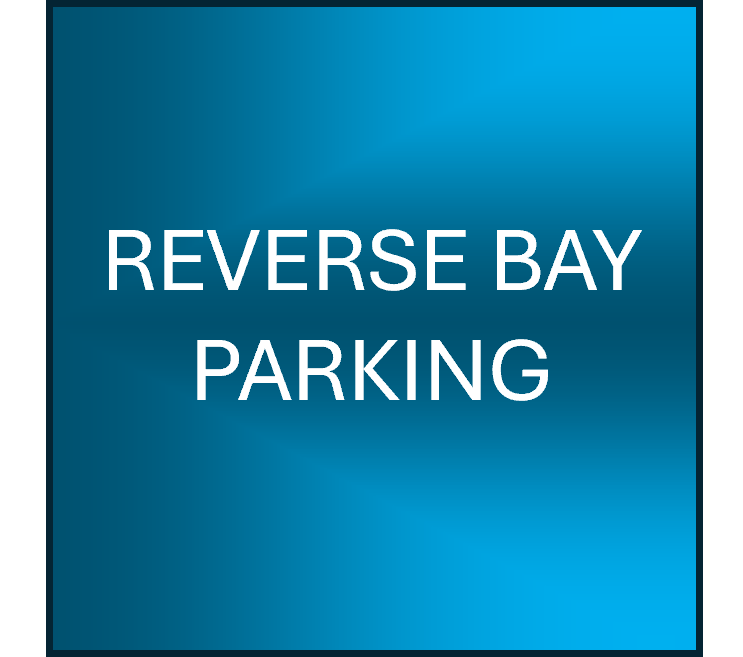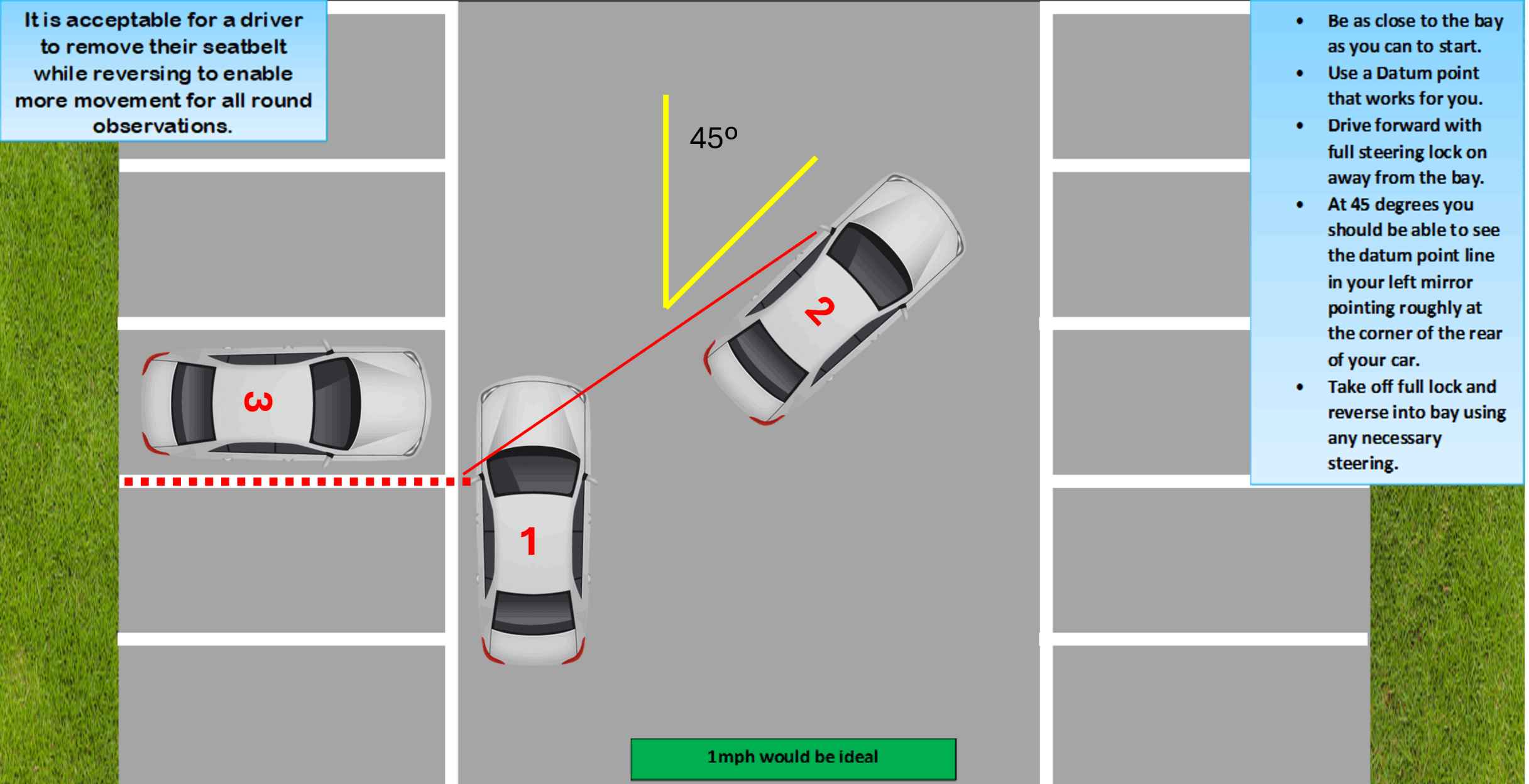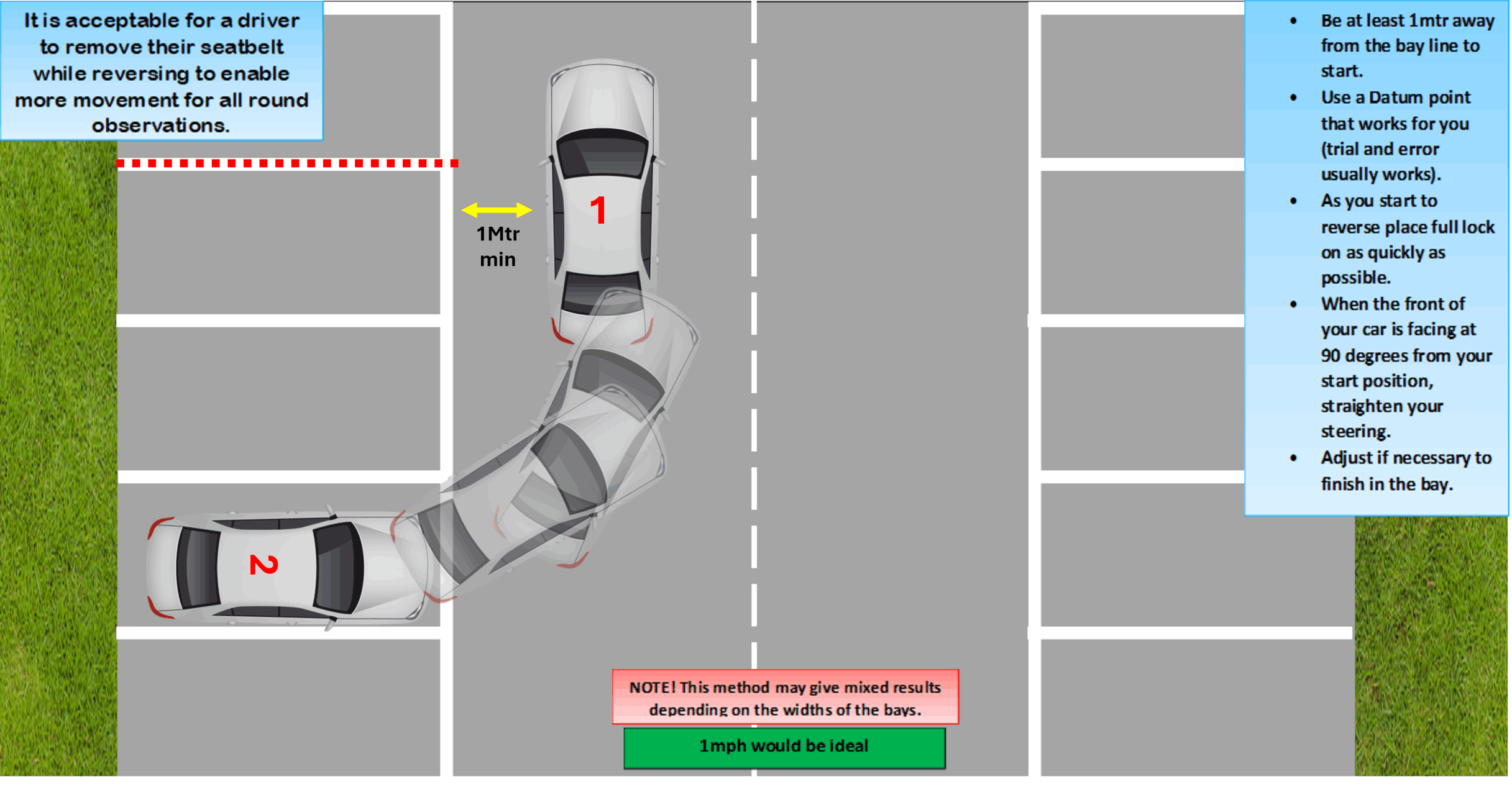
Reverse Bay Parking

Reverse Bay Parking

Generally considered as the easier method for most drivers.
1. Find a datum point and bring the car to a stop.
2. Carry out effective observations, and if safe to do so, move the car forward extremely slowly while placing the steering at full lock away from the bay you are intending using.
3. Once the front of your car reaches roughly 45 degrees from your cars starting position bring the car to a stop and then select reverse gear.
4. Carry out effective observations all around the car.
5. As the car starts to reverse extremely slowly (2mph max) take off the steering, and by using your left door mirror (right if reversing to the opposite direction) keep the nearside of the car to the left hand side of the bay line that you initially used as your start datum point (as shown by the green dotted line).
6. Use whatever steering is necessary to reverse the car into the bay, ideally ending up central within the bay.
7. If the car has not finished within the confines of the bay, pull the car forwards, completely out of the bay if necessary, and then adjust so that on your reverse you can finish with you car within the confines of the bay.
Effective observations MUST be carried out throughout the entire manoeuvre.

An alternative method accepted by the DVSA for a driving test.
If you have a good understanding and good control over your vehicle, either method shown should be relatively easy to do.
However! A lot of instructors teach this by telling the pupil to find a datum point, place full lock on their steering in the direction of the bay, and once the front of the car is facing at 90 degrees from the starting position just straighten the steering and the car will end up perfectly central to the bay.
And as such they would be perfectly correct with the principle of that method, BUT! IT DOES NOT WORK IN EVERY CAR PARK!
Unless the bays are 2.4Mtrs in width, this exact method will go wrong.
And this is just simple maths.
If the bays were 2.4Mtrs equally across the car park, then the 2nd bay 2ould be at 4.8Mtrs and the 3rd bay at 7.2Mtrs
However, if the bays were just marginally bigger or smaller the end result would possibly leave you on or over the white line of the bay.
Eg.
Assuming all equal sizes
1st bay is 2.3Mtr, 2nd bay would be at 4.6mtrs and the 3rd would be at 6.8mtrs, giving a 300mm difference
or let's say they were 2.5 equal size bays.
1st bay 2.5, 2nd bay at 5mtrs, 3rd bay at 7.5mtrs. again a 300mm difference on a standard sized bay.
And this is why some learners may do the most perfect bay park in one car park, but take them to another and use the exact same method, and the park is a total shambles and they cannot understand why it's gone wrong.
In my local area, there is a difference in car park bay sizes from 2.3mtr - 2.8mtrs
Although the manoeuvre is a REVERSE BAY PARK observations are as important when driving out of a bay as they are when reversing into it.